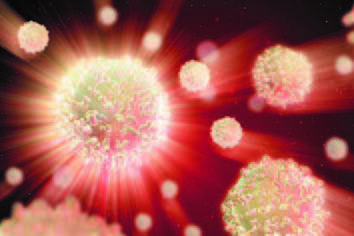Research Update: Stem Cells for Repair of Heart Tissue

When Dr. Johnny Huard was named Chief Scientific Officer, SPRI’s history of regenerative medicine expanded into new areas of research. One of them was heart repair.
Dr. Huard said at the time that muscle-derived stem cells (MDSCs) might be injected into the heart tissue to improve cardiac function. Promising concept, but he didn’t stop there.
“Positive results to repair cardiac tissue have been obtained in 10 patients,” he added.
Those patients are part of ongoing clinical trials. Depending on the outcome, we could see more people taking advantage of the new technology.
PROMISING EVIDENCE
According to the National Institutes of Health (NIH), evidence suggests that stem cells hold promise as a therapy to regenerate damaged myocardium (muscle tissue of the heart). Worldwide, several thousand patients have participated in studies using autologous (meaning from a person’s own body) stem cell therapy.
Given the fact that heart disease is the leading cause of death in the U.S. and that there is limited access to heart tissue transplants, stem cells could fill a clinical need and improve the quality of life for millions of people.
The NIH says that the use of these stem cells for heart condition is currently in its infancy, although many experts say we’re beyond that stage. A lot has to be learned about the best type of stem cell, the biological mechanisms by which stem cells can repair and regenerate heart tissue, and the safety issues that will accompany their use. Dr. Huard has experience addressing all three issues.
TYPES, MECHANISMS, SAFETY
“We knew that some types of adult stem cells could become cardiac cells, but the survival rate of those cells is low. We also knew that myoblasts (cells derived from muscles) injected into the heart did not become cardiac cells, but that they were able to improve cardiac function. No one could explain why this was happening.”
“We were able to show in animal models that MDSCs could result in cardiac repair. Stem cells we injected were basically a source of proteins that were promoting the repair. Although MDSCs injected into the heart weren’t becoming heart cells, they were stimulating angiogenesis—blood vessel formation. New vessels can stimulate cardiac tissue repair.”
Dr. Huard’s team is using this information in two clinical trials, one involving patients who have suffered myocardial infarction (heart attack) and one with those who have stress urinary incontinence (bladder dysfunction).
WHAT WE DON’T KNOW
“An example of what we don’t know,” says Dr. Huard, “is which type of stem cell is best—one that makes cardiac cells or one that promotes angiogenesis. This is a big area of research.”
Some researchers think that embryonic stem cells (stem cell derived from the embryo) are better than those derived from adult tissue such as skeletal muscle tissue because their stem cells can become cardiac cells.
But can umbilical cord-derived cells that become cardiac cells promote angiogenesis? And wouldn’t it be preferable to have a stem cell that could become a cardiac cell and at the same time promote angiogenesis?
WHAT ARE THE POTENTIAL RISKS?
The NIH says that the use of stem cells appears to be relatively safe, although an increased frequency of ventricular tachycardia, an arrhythmia, has been reported in some cases with the use of myoblasts.
Dr. Huard has had first-hand knowledge of that problem. “Sometimes when you inject skeletal muscle cells into the heart, they become skeletal muscle fibers that create arrhythmia. The area treated beats differently than the rest of the heart.”
EXERCISE AND STEM CELLS
“This is a huge area of interest for us,” says Dr. Huard. “We have found that stem cells taken from muscles are derived from the blood vessels in those muscles. Exercise is one way to increase the number of blood vessels. If you have more blood vessels, then you have more stem cells. We really believe that exercise can become a very important trigger to promote tissue repair, possibly including cardiac tissue.”
CLINICAL APPLICATION
How far away are we from clinical applications of stem cells to repair heart muscle tissue?
Dr. Huard says that in one sense, we are almost there now. “We have heart patients now who have been injected with muscle-derived stem cells and their progress is being monitored. We need additional research to determine if stem cells that become cardiac cells will be better for cardiac repair.”
That investigation is in progress. Dr. Huard’s team currently has NIH-funded research to investigate the effectiveness of different kinds of stem cells and to engineer stem cells by putting genes into them that can power cardiac repair.
Basic research takes time and patience. All of the physicians and researchers at SPRI are working diligently to reduce the time gap between basic research, clinical research, and patient treatments.

